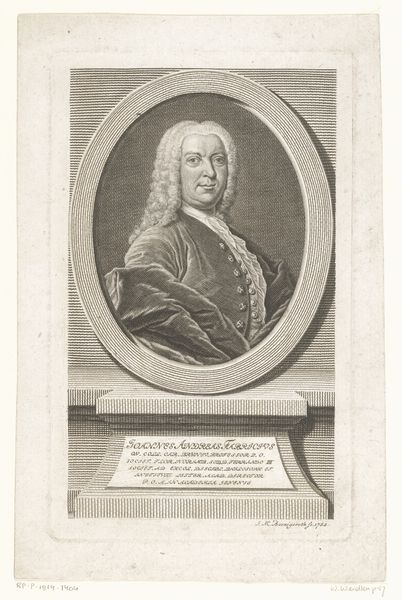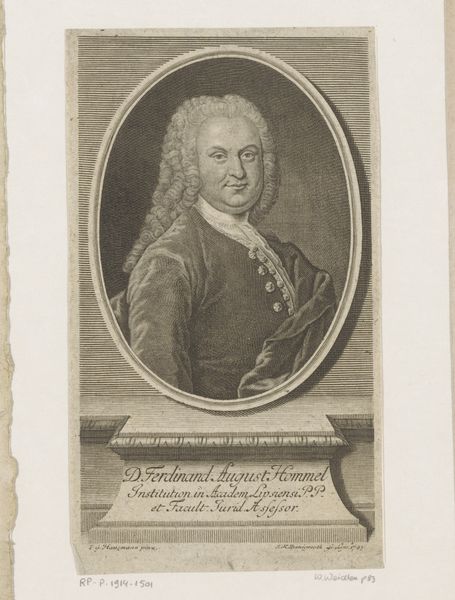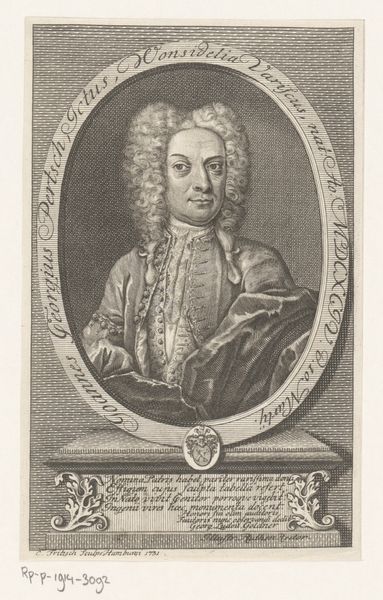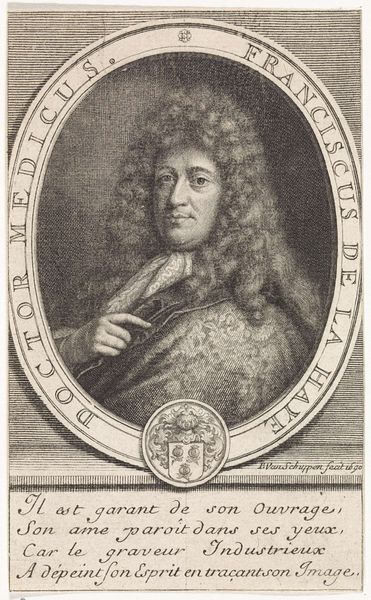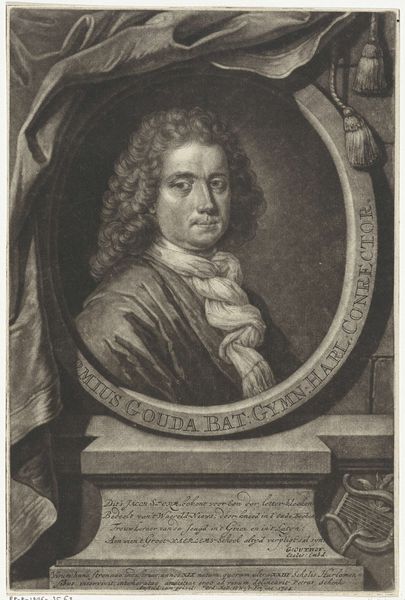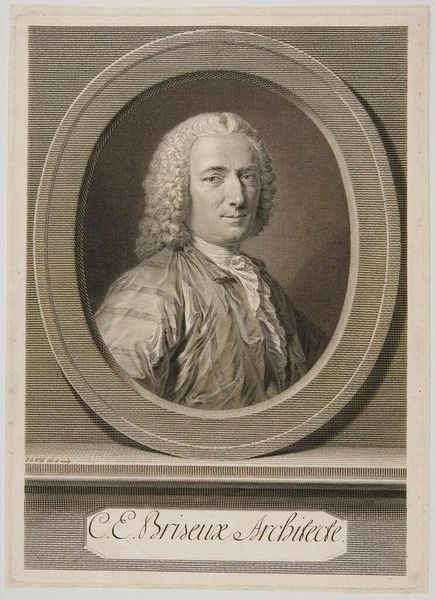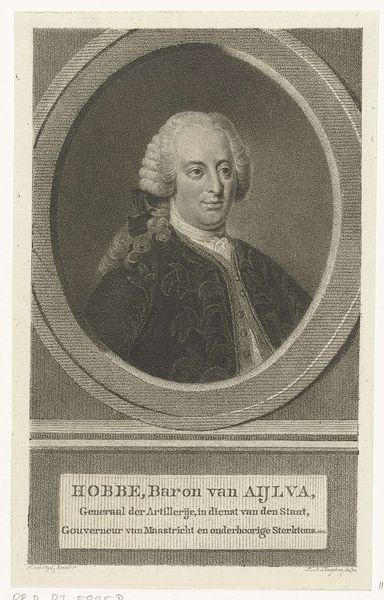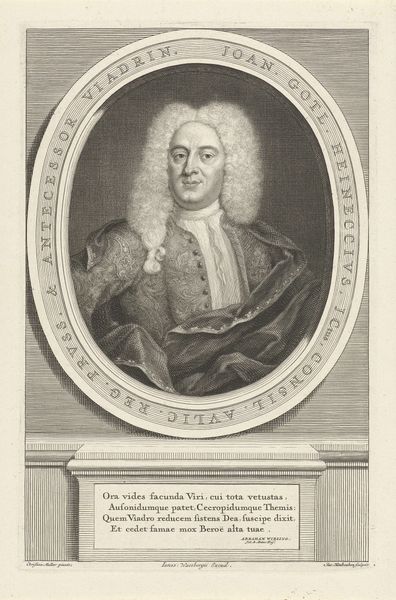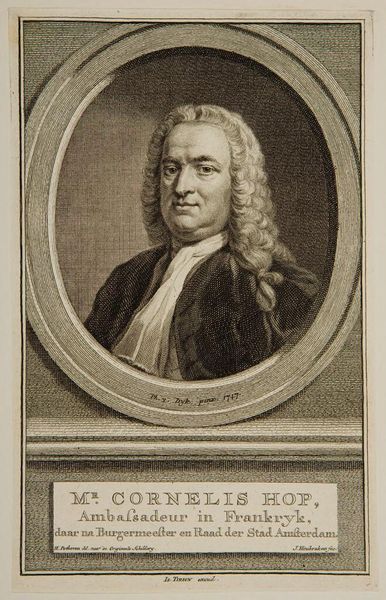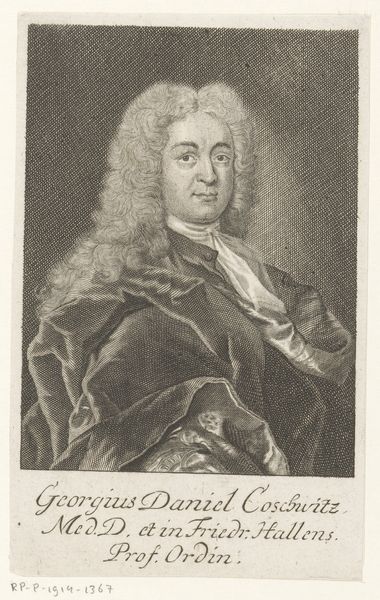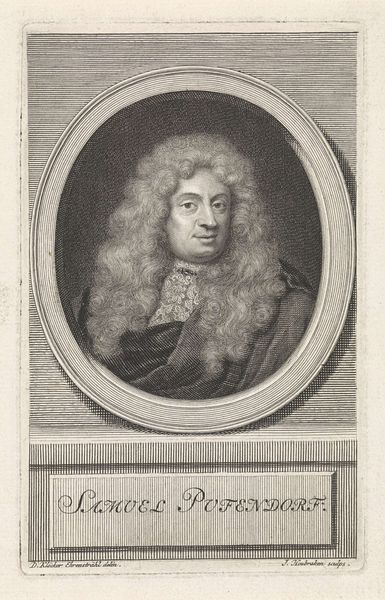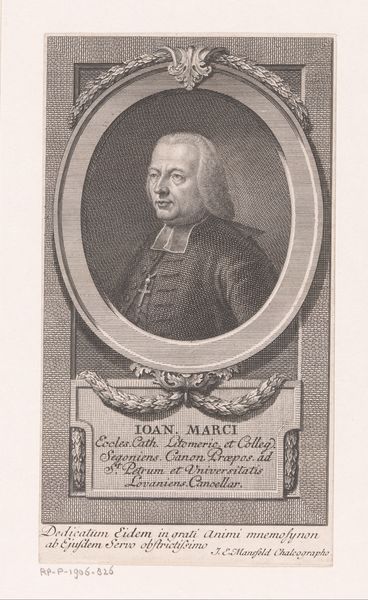
print, engraving
#
portrait
#
baroque
# print
#
old engraving style
#
pencil drawing
#
line
#
engraving
Dimensions: height 129 mm, width 77 mm
Copyright: Rijks Museum: Open Domain
Curator: Let's turn our attention to a print housed here at the Rijksmuseum, a work made by Pieter Tanjé in 1749. It's titled "Portret van Louis Racine" - a portrait of Louis Racine. Editor: It has a distinctly classical feel. The monochrome rendering gives it a strong sense of sobriety. And that elaborate wig – it speaks volumes about the era's preoccupation with appearance. Curator: Precisely. The piece really encapsulates the Baroque aesthetic that persisted well into the 18th century, albeit with the rise of Neoclassicism alongside it. The sitter, Louis Racine, came from a complex position – he was, of course, the son of Jean Racine, the great tragic playwright of the French court under Louis XIV. This engraving performs very calculated work with the lineage. Editor: Given that Louis didn't quite achieve his father's literary heights, do you think this piece attempts to elevate his status through association? What is it saying about inherited legacies, and the burden, perhaps, of a famous name? Curator: Undoubtedly. The print, with its framing inscriptions, both flatters and attempts to solidify Louis Racine’s place within a very specific intellectual landscape. Look at the oval border text— it's deliberately inscribing him into this world of the "Académie Royale des Inscriptions et Belles-Lettres". Institutions create and control social mobility, then and now. Editor: Right, because that Academy focused on history and classical literature. The Latin verse inscribed below the portrait hints further, with references to religious devotion – is this gesturing at a supposed difference between Louis and his father, where Louis chose a different thematic path? Curator: Exactly! Jean Racine had become controversial with his later turn to Jansenism. And, crucially, these biographical, often moralistic, reframings of legacy were shaping public perceptions, particularly regarding who has the ‘right’ to recognition. Think of what a burden those kinds of narratives put on younger generations. Editor: It makes one question what gets remembered, by whom, and for what reason. I do find the directness and relative plainness of Tanjé’s lines a very refreshing rendering when you set it against the swirling complexity of the Baroque movement as a whole. Curator: I completely agree; Tanjé and his engraver contemporaries reveal that “simple” appearances often belie politically complex and nuanced messaging.
Comments
No comments
Be the first to comment and join the conversation on the ultimate creative platform.

